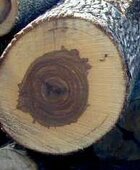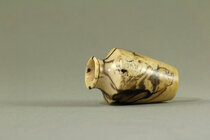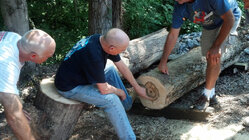I’m getting ready to clear some land to build a house will be taking out several sweetgum trees around 12” in diameter. What length logs would you recommend cutting to put on a wood pile to deal with later?
-
December 2025 Turning Challenge: Single Tree! (click here for details) -
Congratulations to Bob Henrickson, People's Choice in the November 2025 Turning Challenge (click here for details) -
Congratulations to Guillaume Fontaine for "Old Tea Pot" being selected as Turning of the Week for December 15, 2025 (click here for details) -
Welcome new registering member. Your username must be your real First and Last name (for example: John Doe). "Screen names" and "handles" are not allowed and your registration will be deleted if you don't use your real name. Also, do not use all caps nor all lower case.
You are using an out of date browser. It may not display this or other websites correctly.
You should upgrade or use an alternative browser.
You should upgrade or use an alternative browser.
Sweetgum logs
- Thread starter Webb Willmott
- Start date
- Joined
- Feb 28, 2021
- Messages
- 1,770
- Likes
- 1,582
- Location
- Roulette, PA
- Website
- www.reallyruralwoodworks.com
Keep em as long as you reasonably can while still being able to move & locate them up off the ground and under cover - or they'll just rot , crack and fill up with bug holes. So if you can handle 8 foot logs (or longer) by all means cut em at 8 foot - that'd save you a bunch since you're gonna be cutting about 6 inches off an end to get to usable / turnable wood - much easier to cut off one 6 inch section before cutting your blank section than trying to fit your blank section within whatever un-cracked space is left on a short log.
If you are lucky you might get some spalting. Sweet gum spalts as nicely as maple or pecan. When you cut it for blanks and rough turn be sure to steer clear of the pith and allow lots of room for movement, sweet gum is famous for that.
as big as your able to handle. wet logs are heavy 12"d 2 feet long will probably be 50-70 lbsI’m getting ready to clear some land to build a house will be taking out several sweetgum trees around 12” in diameter. What length logs would you recommend cutting to put on a wood pile to deal with later?
I had a Sweetgum at my former home. I turned a lot of goals out of it. Some wet and some dry. Many of my woodturner club members took some also and many of the pieces got turned into very nice pieces. If turned wet it will move. It is about the same as soft maple to turn wet.
I don't know about Mississippi but here in North Florida Sweetgum spalts as soon as it hits the ground. I know you're clearing land and plan to turn the wood later but I wouldn't wait too long.
I’m getting ready to clear some land to build a house will be taking out several sweetgum trees around 12” in diameter. What length logs would you recommend cutting to put on a wood pile to deal with later?
12" diameter at the base? How tall? Estimated diamter before the first major branching?
Small diameters like that do put some limits what you can do with the logs.
If possible, I'd wait until winter to cut at least some. Can result in better wood - the sap will be "down", less moisture in the log so less cracking and splitting, and the cooler weather will slow both drying and fungal growth, and attract fewer powder post beetles If you have to take them them sooner and have a means and place to put them, after limbing keep the logs as long as practical. Set them up off the ground a few inches, maybe on pieces of limbs or better, cinder blocks. I seal the ends but that doesn't matter much to prevent end checks/splits if it will be months before you or others can use them. Don't cover tight with tarps (rain won't hurt) but try to keep out of direct sun, especially if it's warm or still stored next year when it gets warm.
When I take down a tree or get logs, there is always WAY more wood than I can use or cut up and dry. The club sends out notices and everyone who wants green wood calls and cut and haul what they want. Some take chunks to pass to other turners. Spreads the joy. Some come especially for the crotches. If you don't have time to use the wood yourself in a reasonable time, spreading it around can avoid wasting it.
Those who only turn green shouldn't keep more than they can turn in a short time unless they get a long log. The late great John Jordan said he always got the whole log even if he had to pay for delivery. Set the log off the ground and out of the sun. When ready to turn something, as Brian mentioned, he cut about 6" off the end, cut his blank, then immediately took it to the lathe. Any other way that results in too many short rounds sitting around for a while. without keeping them wet, is just making firewood. Might as well cut into firewood lengths and throw them in a pile.
Since I have the space and equipment, I do like to process as much as I can into usefull blanks as soon as possible, seal, and dry them. That doesn't always work as well for bowl blanks, especially with small diameter logs.
If you WANT spalting, I talked to a guy who kept a spalting farm. He cut lengths of logs maybe 4' long or so, and stood them on end in the dirt and leaves. After an unspecified time (a guess based on experience) he would cut some off the bottom and check the spalting. If promising, he cut a useful length to see if the spalting reached that far. Of course, there's a fine line between spalting and rot! Might be fun to try some.
Unfortunatley, logs from 12" trees in general aren't much good for having sawn into boards. For big enough logs, I like to saw into 3-4" thinck planks. There are people with portable bandsawmills that will come to your site - if you find one you might ask for advice.
If you DO have to cut into pieces small enough to lift and carry, I find they keep pretty well (if I cut straight, square ends) if I set one on plastic or a tarp, then stack others on top, then put some covering on the very top. Hose them down occasionally Stacking keeps the end grain cuts from drying too fast and minimizes checks. I'll keep them for months like this until I can get to using them or processing into blanks. For 12" diameter logs I might cut 12-16" lengths. Still, if not used quick enough the best use might be firewood.
JKJ
There are about 10 to15 trees (I'm not touching the ones with poison ivy) and the diameter is ~12" chest high. They will be bulldozed if not cut in the near future so winter is not an option. I think I'll leave the main trunks in 8-10 foot lengths and the rest will be on the burn pile. I'm not interested in boards and will get info to the local club when the time comes.
A, hopefully redundant and unnecessary, public safety announcement. The smoke from poison oak, poison ivy and such is very dangerous if inhaled. The irritant is not removed by fire. I will leave it to your imagination what happens to your lungs if you breath it. Please be safe and just don't.
There are about 10 to15 trees (I'm not touching the ones with poison ivy) and the diameter is ~12" chest high. They will be bulldozed if not cut in the near future so winter is not an option. I think I'll leave the main trunks in 8-10 foot lengths
From what I read the sapwood is wide so only the larger trees have a significant amount of the desirable heartwood (the redgum part) with the dark streaks. (Wood Database says the mature trees can be 24-36" in diameter) I have no experience, having only seen one sweetgum tree here. Hopefully the 12" logs will have enough heartwood for interesting box and spindle blanks, at least on one side, or small bowls. It would be interesting to see a cross-section photo of the endgrain when you cut one.
I found this photo on hobbithouseinc but don't see any dimensions.

From that web site: "log section showing very nicely the distinct color variation between sapwood and heartwood, the high width of the sapwood, and the common jagged separation between sapwood and heartwood that makes for some very interesting streaking effects in flat cut planks that pass through that area."
From other pictures, spalting in the wide sapwood (the sweetgum part) can be spectacular and might be worth trying to encourage.
I turned this is from a small piece of spalted sweetgum someone sent to me.
I think he found the wood on the ground, partially decayed. I stabilized the punky parts with CA glue.
For scale, I think it's less than 2" tall.


I'm wondering now if this is gum. The late great John Jordan is showing us how he decides where to cut green blanks. One of the guys brought the logs to a class. I never heard what kind of tree it was, but later he was doing something artistic with a spiky sweetgum ball. Does the bark here tell you anything? I think all the logs are from one tree.

JKJ
Good reminder. I treat the vines near the ground with Garlon, cut and pull them down with gloves (wearing long sleeeves) or the excavaor when I encouter a "poison ivy tree", pile them to dry, then bury the pile or just let them rot in the woods and turn to dirt.A, hopefully redundant and unnecessary, public safety announcement. The smoke from poison oak, poison ivy and such is very dangerous if inhaled. The irritant is not removed by fire. I will leave it to your imagination what happens to your lungs if you breath it. Please be safe and just don't.
Funny thing - I've never seen any poison oak around here. However, I've met many in this area who are sure Virginia Creaper is poison oak (false info passed down over generations)! Some nearly paniced when I assured them it's not and rub some of the Creeper leaves on my arms and face to prove it.
I am quite sensitive to the poison ivy, etc, but read years ago that if you wash any contacted skin in a reasonable time the urushiol is easily removed. The advice was to use soap and water but if I'm away from the house just water has always worked fine for me.
BTW, goats and llamas will eat any poison ivy leaves and vines they can get, will clear the area. They are not affected.
JKJ
- Joined
- Feb 6, 2010
- Messages
- 3,454
- Likes
- 2,522
- Location
- Brandon, MS
- Website
- threeringswoodshop.square.site
I have not had good experience keeping sweet gum. It does spalt rapidly when down and if kept in the shop in log form and it was maybe a year and a half it was too far gone for good use. Note this was a small log about 10 inches.
